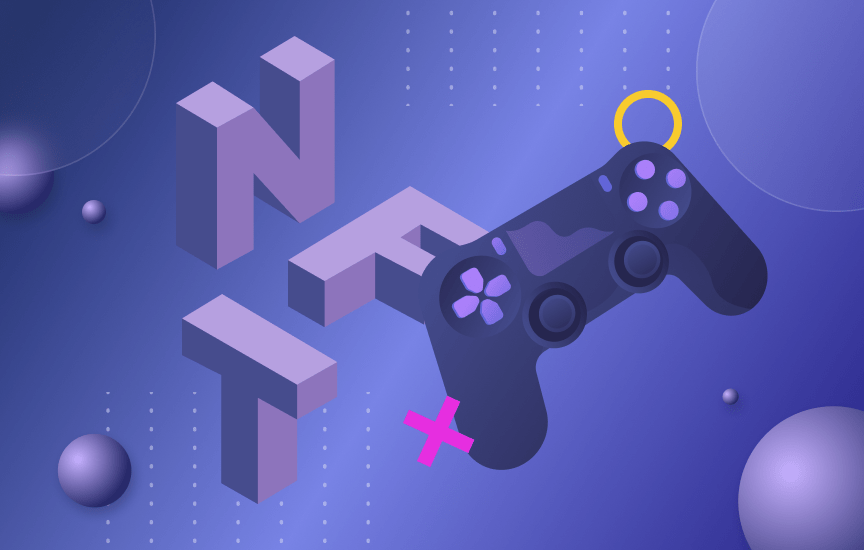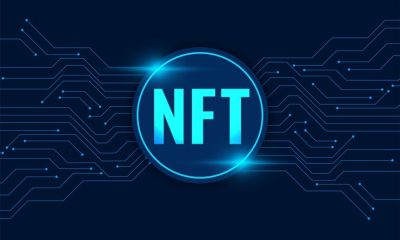Tech
How Play-To-Earn NFT Games Are Driving The GameFI Revolution

If you’re a start-up enthusiast wanting to create and launch a play-to-earn (P2E) gaming company leveraging cutting-edge technology like blockchain and NFT game development services, this blog is for you. Here, we provide useful information that developers of play-to-earn NFT games should take into account both before and during the development process.
Traditional Gaming And Play-To-Earn
The “closed-end model” is typically used in traditional gaming. Players invest a lot of time grinding and completing time-consuming tasks in a game in order to advance or unlock prizes. However, they ultimately lack the power to transfer or dispose of those earned assets. They must abide by the regulations established by the organized gaming industry. It is always free to add new regulations or make other changes.
Play-to-earn games, on the other hand, let players play games and get paid for their effort. Players that complete tasks, participate in player battles, or progress through game levels, especially with blockchain- and NFT-based play-to-earn games, are rewarded with in-game items such crypto tokens, virtual land, avatars, weapons, and other non-fungible tokens, or NFT. Additionally, due to its blockchain-based architecture, play-to-earn games allow players to buy and transfer in-game assets like NFT outside of a game’s virtual environment, in contrast to traditional games.
NFT, Blockchain, and Play-to-Earn Games
Virtual economies are present in play-to-earn games. Each of them has proprietary crypto tokens built on a different cryptocurrency’s blockchain (often Solana, Ethereum, or its layer 2 chain, Polygon), and the supply and demand of its tokenomics fluctuate.
The model and economy of each game vary. Nevertheless, all of these in-game objects have the potential to give players a financial advantage, whether it be as a result of winning a battle and receiving bitcoin, selling an in-game NFT on the market, or charging another player rent to use their virtual property.
It’s fascinating to see that decentralization and autonomous governance are introduced wherever blockchain joins a field. It’s time to start playing.
Understanding The NFT-Involved Play-to-Earn Game Economies
Developers must think beyond their bottom line in order to create a play-to-earn economy.
Players and developers are like business partners in this scenario. The way it works for NFT-based p2e games is as follows.
The players in the partnership are responsible for holding valuable assets and sharing them via trading. The number of players in the game should rise as a result. There is one important factor that developers must take into account.
The developer benefits when transaction fees are decreased. Every time an NFT is transferred, the developer receives money.
Assume that a skin NFT’s royalty rate is set at 2%. The developer who created this NFT will make money each time it is sold to another gamer. Always, not just in the initial few occurrences. As a result, the developers must exercise caution while choosing a price.
How about the video games that offer the current cryptocurrencies? How do they make money?
Most frequently through displaying advertisements to gamers. Here, time is a key factor. As long as users invest a lot of time in the games to earn some cryptocurrency, the designers should receive adequate advertising revenue.
Frequently Played NFT Play-To-Earn Games
CryptoKitties
Players can buy, collect, breed, and sell digital cats in the Canadian studio Dapper Labs’ Ethereum-based blockchain game CryptoKitties. This project was one of the first to gamify decentralized finance.
Decentraland
In this 3D world, players may purchase virtual land, build it, and then rent or sell it to other players in exchange for the MANA cryptocurrency, which runs on the Ethereum blockchain. when the top blockchain game development platforms
Blockchain Platforms For NFT P2E Game Development
Ethereum
You can design applications and write code to handle money using Ethereum development services. The blockchain of Ethereum is designed to run the source code of a decentralized application.
Tron
By allowing content sharing, Tron develops an environment where users can gain access to digital assets.
Start With Conceptualization And Ideation
Start with a plan that, in your opinion, takes into account factors like NFT integration, in-game economies, and game mechanics while also satisfying user and market needs.
Is Gaming The Future Of NFTs?
Web3 games rethink who owns and controls the assets used in games. Web3 game assets can be created as NFTs and freely shared or sold on NFT markets, opening up new revenue streams, in contrast to their “traditional” equivalents. Because they provide players complete ownership and control over in-game resources, these games give players a special sense of belonging in their virtual worlds.
Players can also obtain assets like NFTs from other players or by completing activities and missions in-game. They have the option of selling, keeping, or moving their assets to various game ecosystems. In turn, this has increased the use of gaming NFTs by luring a wave of traditional gamers into the Web3 area. The future of NFTs may be influenced by this.
The trading volume of gaming NFTs on markets will increase as the Web3 gaming community grows, boosting liquidity and cutting down on asset transaction wait times. NFTs from games have worth both within and outside of the game they come from. Gaming NFTs, in contrast to other digital assets, provide special in-game utilities that encourage longer-term retention.
Additionally, holders of gaming NFTs have extra advantages and bonuses. In Axie Infinity, owners can make passive money by renting out their Axis through the Axie Infinity Scholarship, for instance.
In conclusion, the Web3 gaming industry may very well be the NFTs of the future. The popularity of NFTs has increased due to their unique experiences and appeal to traditional gamers. Web3 games will develop as the Web3 ecosystem does, providing even more distinctive experiences and raising user engagement.




